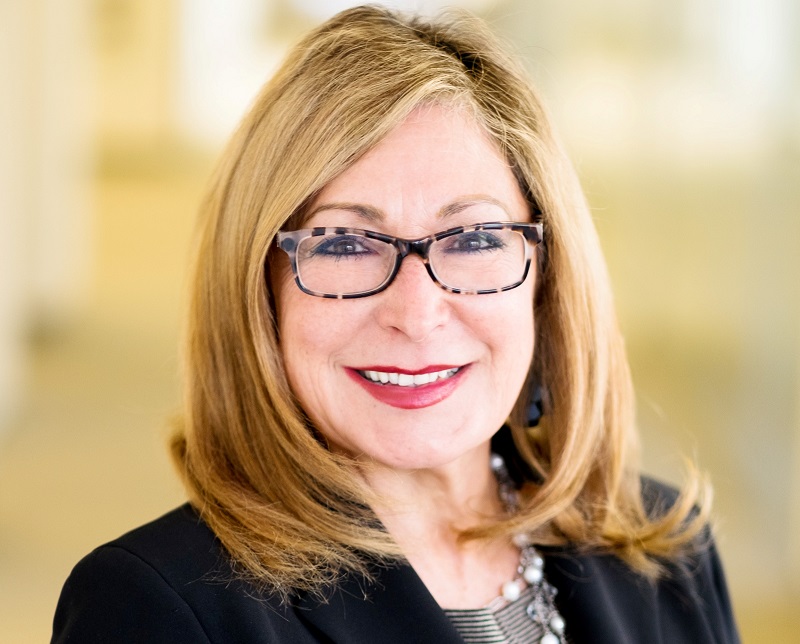
A champion of equality—it’s no wonder, Aida Sabo, Vice President of Diversity and Inclusion for PAREXEL, decided to enter the field of diversity and inclusion (D&I). From creating an inclusive work environment in which all genders can thrive to developing strategies to address institutional blind spots, Sabo leads the D&I initiatives both nationally and internationally.
Color Magazine: Can you tell us more about your role as the Vice President of Diversity & Inclusion at PAREXEL?
Sabo: I came to PAREXEL to work with the leadership team and launch the company’s first Diversity and Inclusion strategy. PAREXEL was launched by two entrepreneurs, a woman and a man. And from the start, we had many women around the world in leadership roles. Being in the healthcare industry, we have many women in our workforce, however as we look higher up in the organization, we seem to have had a lesser presence of female leaders over the years.
As I lead the design, development, and execution of our D&I infrastructure and strategy, my goal is to address this opportunity, as well as create an environment where all people feel welcomed and valued.
CM: What skills are absolutely necessary to lead as a Chief Diversity Officer or as a leader in diversity and inclusion?
Sabo: The ability to create a compelling vision as well as influence and collaborate with people of all levels across the organization are skills that are absolutely necessary to be a leader in D&I. It is also essential to understand the business of your company and the competitive nature of the market. Be resilient, courageous, and relentless. You may hear “no” many times, but it’s important to not give up.
CM: What made you decide to enter the D&I space?
Sabo: In my early career days, I was an electrical engineer working in Silicon Valley and got involved with the women’s network employee resource group at our company. Afterward, I helped launch the first Hispanic network in the company, which led to community events and more involvement in the space. The joy of working to better our work environment and help create positive role models for diverse talent really inspired me. I was later offered to interview for the Head of D&I at the company.

CM: What diversity and inclusion strategies have you implemented at PAREXEL?
Sabo: While at PAREXEL, I’ve launched the company’s first D&I strategy with leadership. This involved building the infrastructure, creating the development programs needed for awareness and skill building, and developing a communications plan to begin integrating D&I into our culture.
In addition, I have launched regional engagement D&I teams at PAREXEL locations in India, Germany, and the United States, with more to come; created partnerships with leading D&I organizations; developed a Gender Representation Data report; launched a Leadership in Excellence Award, with an Inclusion element; and added an inclusion measurement to the Employee Opinion Survey. I have also rolled out a number of workshops and programs, such as PAREXEL’s Men Advocating Real Change workshop, Women in Leadership Development programs, Community Thought Leadership forums, and another interesting project leveraging big data.
CM: What advice would you give to newly-minted Chief Diversity Officers?
Sabo: My advice to newly-minted Chief Diversity Officers is to develop a clear understanding of your company’s priorities and how D&I can support them. In addition, it’s important to understand why they hired you and what they are trying to achieve.
There have been times in my career when I wanted to move faster than the current environment or culture would allow. I had to learn about pace and say to myself, “My role is to push this rock up the hill and leave it farther than where I found it.”
CM: What do diversity and inclusion mean to you? What is your personal definition?
Sabo: Diversity is a fact and a reality. Everywhere we go there are differences; it’s important to learn how to work across these differences so that we can have that diversity of thought, perspective, culture, region, etc. This intersection of differences is so powerful because it drives creativity and innovation.
Inclusion is a choice. It’s a choice one makes to include or exclude. You have to do something in order to include; it doesn’t just happen on its own, and consciously being inclusive is another leadership trait that is critical for all leaders.
CM: If there is a company or organization that doesn’t have an office of diversity and inclusion, how would you advise them on hiring and retaining a more diverse and inclusive staff?
Sabo: I would advise that they need to understand the data around their representation, hiring, promotion, and retention so that they can make data-driven decisions. This includes studying the company’s employee survey results to get a pulse on the current atmosphere, as well as talking to people and finding out how they feel about the environment and culture.
It’s important to create an environment that supports who people are, not what people are—where everyone is valued, respected, and supported to deliver their best work. Talent has no boundaries.
CM: In your opinion, what can be done to take diversity and inclusion to the next level?
Sabo: I believe that we need to invite allies to the table so that together we can create an environment that supports people for who they are.
For example, in the past, women worked together to advance women in the workplace. We need to invite men into the conversation so that through Gender Partnership we create work environments where all genders flourish. This can be applied to other areas in diversity—working together, collaborating, and creating a vision of culture that supports all.
Additionally, there is a lot of work being done on predictive analytics. Leveraging data to predict people’s outcomes will help us tremendously. Much work is being done in this space to further leverage in diversity and inclusion.


